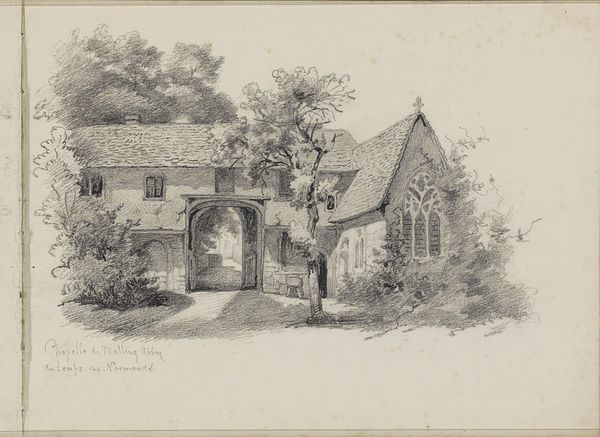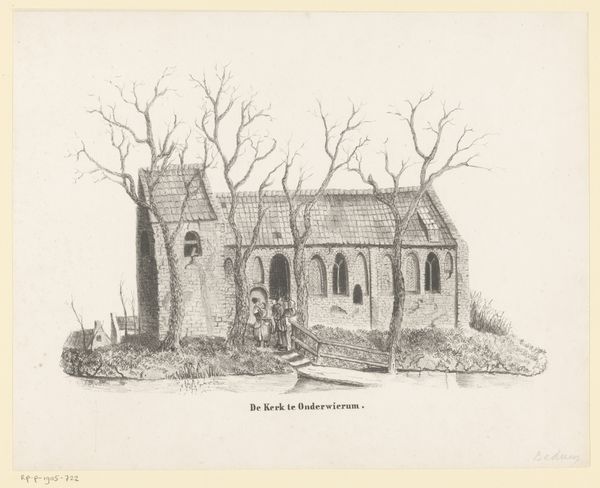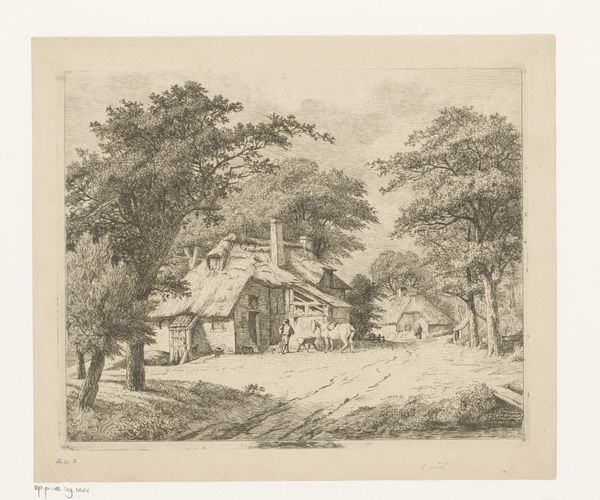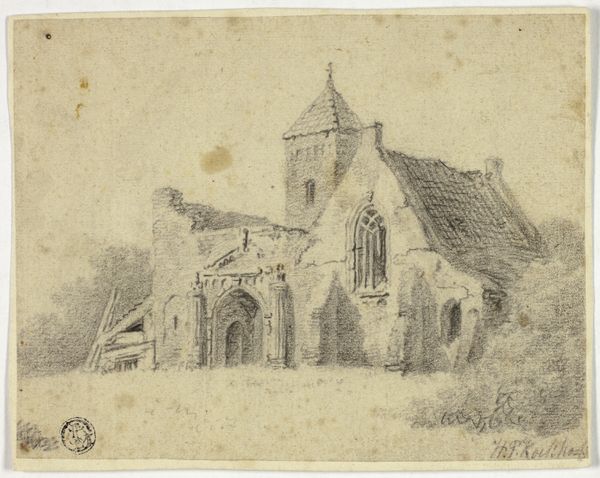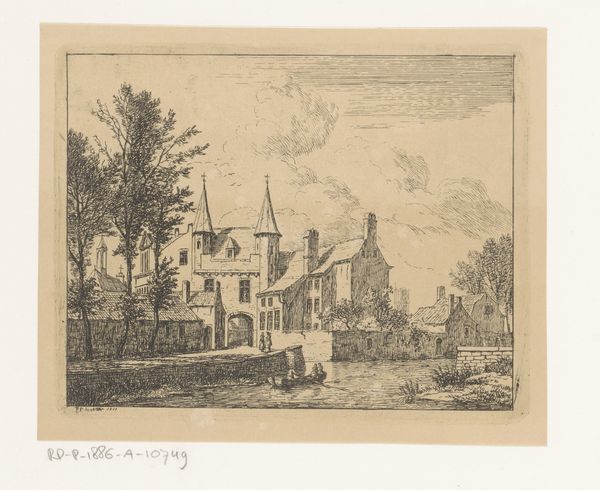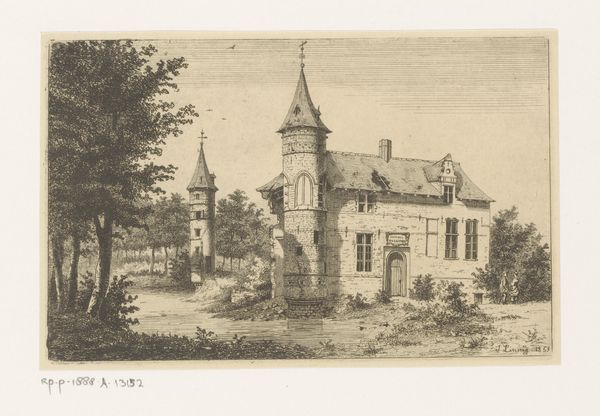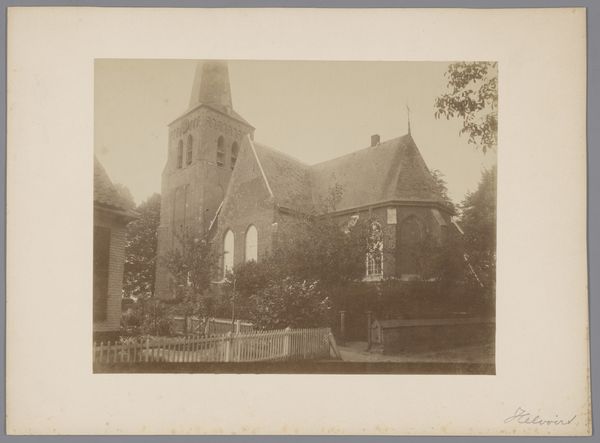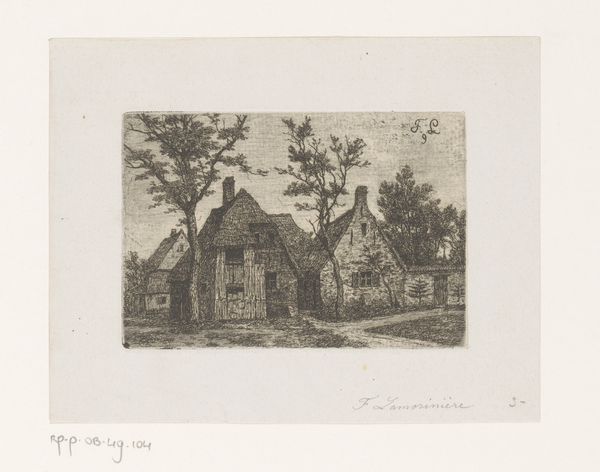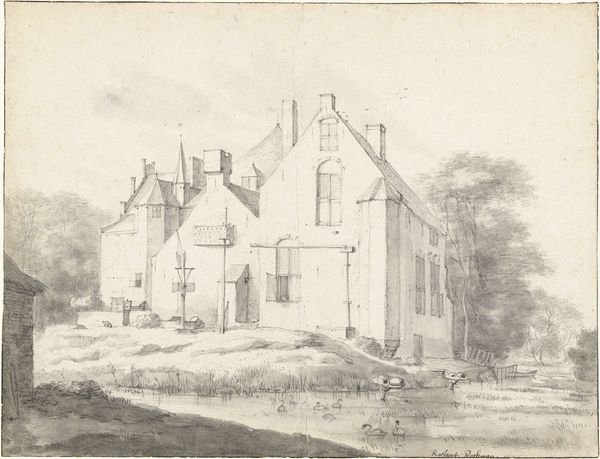
#
pencil drawn
#
amateur sketch
#
light pencil work
# print
#
pencil sketch
#
incomplete sketchy
#
charcoal drawing
#
pencil drawing
#
pen-ink sketch
#
pencil work
#
watercolor
Dimensions: plate: 25.4 × 35.56 cm (10 × 14 in.) sheet: 41.28 × 54.61 cm (16 1/4 × 21 1/2 in.)
Copyright: National Gallery of Art: CC0 1.0
Editor: This is "Old Swede's Church" by Robert Shaw, created in 1904. It appears to be a print of a pencil or charcoal drawing. It feels quite melancholic and perhaps even a bit overgrown. What do you see in this piece? Curator: I see more than just a quaint depiction of a historical church; I see a potent symbol of cultural heritage grappling with time and change. Think about the context: 1904. What narratives of immigration, assimilation, and the preservation of cultural identity might be at play here? Who was Robert Shaw, and what might *he* have been trying to say about the immigrant experience? Editor: That’s interesting! I was only focusing on the aesthetic qualities. It hadn't occurred to me to consider the social and cultural factors that might have shaped Shaw's perspective or even the context of the church itself. So, do you see this as a commentary on the challenges faced by immigrant communities? Curator: It certainly could be. Consider the visual elements. The church is almost swallowed by the landscape. Is this a statement on how time and the dominant culture can overshadow minority histories? Or is it an attempt to memorialize a disappearing past? Or even, perhaps, to ground and legitimize it? What does it mean to see the church so heavily shaded with an almost gothic tone, shrouded in foliage? Editor: That makes me look at it completely differently. Maybe there is more to it than just a pretty sketch. Perhaps Shaw intended to provoke thought on the legacies left from past struggles of assimilation into a society. It is sad in some respect, that if you don't know that cultural context, that underlying tone might be missed. Curator: Precisely. It reminds us that art isn't created in a vacuum. Looking at the historical context is as much about looking at who gets to create history, and whose stories get told.
Comments
No comments
Be the first to comment and join the conversation on the ultimate creative platform.
